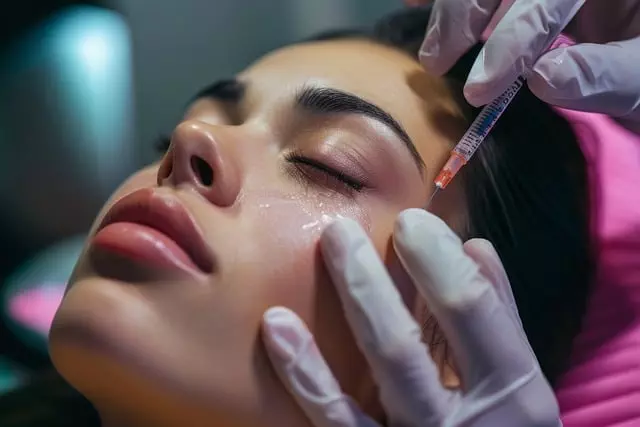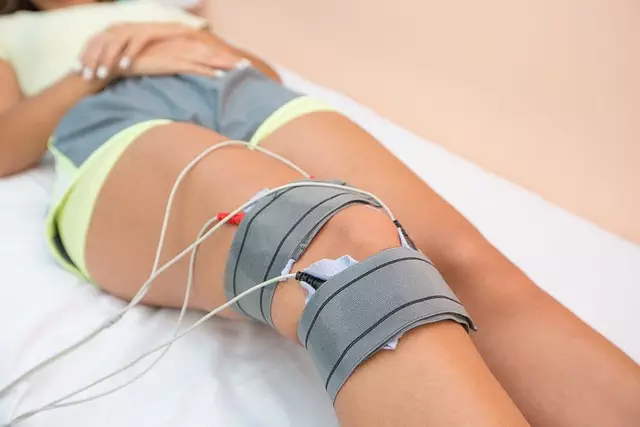RF non-surgical procedures, including Botox treatments, have gained popularity as safer, more effective alternatives to traditional surgery for anti-aging and aesthetic enhancements. Using radiofrequency energy to stimulate collagen production, these procedures improve skin texture, reduce wrinkles, and enhance facial contouring with quicker recovery times. Botox specifically relaxes muscles to minimize dynamic wrinkles, complementing RF's collagen stimulation. Ideal candidates include those seeking specific aesthetic goals and good health, with proper post-care essential for optimal results and minimizing side effects.
“Discover the future of non-surgical skincare with RF (Radiofrequency) procedures, a game-changer in aesthetics. This comprehensive guide explores the various facets of this innovative technology. From skin tightening to Botox treatments—a key component of RF procedures—we uncover its benefits and diverse applications. Learn how it safely enhances results, ensuring positive outcomes for all patients. Ideal for individuals seeking effective, non-invasive solutions, this article covers patient selection, pre-treatment prep, post-care, and more, including the role of Botox treatments in these cutting-edge RF non-surgical techniques.”
Understanding RF Non-Surgical Procedures: An Overview

RF (Radio Frequency) non-surgical procedures have gained significant popularity in the cosmetic industry as a safe and effective alternative to traditional surgical methods. These treatments leverage the power of radio waves to stimulate collagen production, resulting in improved skin texture, reduced wrinkles, and enhanced overall facial contour. One prominent example is Botox treatments, which use injections to relax muscle activity, smoothing out fine lines and giving a more youthful appearance.
The RF non-surgical procedure typically involves the use of specialized devices that emit radio frequency energy into the skin. This energy heats up the deeper layers of the dermis, encouraging the body’s natural healing process and collagen synthesis. Unlike surgical options, these procedures are minimally invasive, offering quicker recovery times and less downtime. They are suitable for a wide range of individuals seeking to enhance their facial aesthetics without the risks associated with surgery.
The Role of Radiofrequency in Skin Tightening

Radiofrequency (RF) skin tightening has emerged as a popular non-surgical procedure, offering an alternative to traditional Botox treatments for those seeking younger-looking skin. This innovative technology utilizes focused radio waves to stimulate collagen production and improve skin elasticity. The RF energy heats the deeper layers of the skin, encouraging the body to produce more collagen and elastin, which are essential proteins for maintaining skin firmness and a youthful appearance.
Compared to Botox, which primarily relaxes facial muscles, RF treatments take a more comprehensive approach by not only reducing the appearance of fine lines and wrinkles but also tightening loose skin. This dual action makes RF procedures appealing for individuals looking for a more holistic anti-aging solution. Moreover, RF technology is non-invasive, making it an attractive option for those who prefer to avoid injections or surgical incisions.
Botox Treatments: A Key Component of RF Procedures

Botox treatments have emerged as a key component in RF (Radio Frequency) non-surgical procedures, offering significant advantages for those seeking youthful and rejuvenated skin. In this context, Botox is not just about smoothing expression lines; it plays a pivotal role in enhancing the overall effectiveness of RF technologies. By relaxing facial muscles, Botox helps reduce dynamic wrinkles caused by recurring muscle contractions. This results in a more relaxed and youthful appearance, complementing the collagen-stimulating effects of RF treatments.
The synergy between Botox and RF lies in their combined ability to address different aspects of skin aging. While RF technologies stimulate collagen production, Botox treats static lines and provides immediate relaxation, creating a more balanced and natural-looking transformation. This dual approach ensures that both structural support and muscle tension are addressed, leading to improved skin texture, elasticity, and overall facial harmony.
Benefits and Applications of RF Non-Surgical Techniques

RF non-surgical procedures, including Botox treatments, offer a wide array of benefits and applications for those seeking enhancements or corrective measures without the invasiveness of traditional surgery. One of the key advantages is their minimal downtime, allowing individuals to resume their daily activities with little to no recovery period. This makes them an attractive option for people who desire results but cannot take time off work or social engagements for extensive healing.
Additionally, RF non-surgical techniques are highly versatile in terms of applications. Botox, for instance, is commonly used to smooth fine lines and wrinkles, particularly around the eyes and forehead, providing a youthful appearance. Beyond aesthetic purposes, these procedures can also address medical conditions such as chronic headaches or excessive sweating (hyperhidrosis). The ability to target specific areas with precision ensures effective results while minimizing potential side effects, making RF non-surgical methods a preferred choice for many.
Safety and Efficiency: Ensuring Positive Outcomes

RF non-surgical procedures, including Botox treatments, have gained significant popularity due to their safety and efficiency in achieving desired aesthetic outcomes. These advanced techniques offer a less invasive alternative to traditional surgical methods, appealing to individuals seeking subtle improvements without prolonged recovery times. The use of radiofrequency (RF) energy in these procedures enhances collagen production, resulting in improved skin texture and reduced signs of aging.
Safety is a top priority in the cosmetic industry, and reputable RF non-surgical treatments have proven their effectiveness with minimal side effects. Botox, for instance, has been extensively studied and regulated, ensuring its safety when administered by qualified professionals. This focus on safety, combined with the precision of modern equipment, enables practitioners to deliver tailored treatments that cater to individual needs, ultimately fostering confidence in patients seeking enhanced beauty and well-being.
Patient Selection and Pre-Treatment Considerations

When considering RF non-surgical procedures, patient selection is a critical step. The ideal candidates are typically individuals with specific concerns, such as skin tightening or facial contouring, who have realistic expectations and maintain good overall health. For example, Botox treatments are often recommended for patients aiming to reduce the appearance of fine lines and wrinkles, with particular focus on the forehead, eyes, and mouth areas.
Pre-treatment considerations are equally important. Patients should be informed about potential side effects, downtime, and expected results. A detailed consultation with a qualified healthcare provider ensures that both parties understand the procedure, setting clear expectations for optimal outcomes.
Post-Procedure Care and Maintenance

After any RF non-surgical procedure, including Botox treatments, proper post-procedure care is essential for optimal results and to minimize potential side effects. Patients should follow their practitioner’s specific instructions, but generally, it involves resting, staying hydrated, and avoiding strenuous activities for a few days. Applying cold compresses can help reduce swelling and discomfort in the treated areas.
Additionally, maintaining good hygiene and avoiding touching or manipulating the treatment sites is crucial. Using gentle, fragrance-free products for cleansing ensures that the skin remains unharmed and promotes faster healing. Patients should also be mindful of sun exposure; wearing sunscreen and protective clothing outdoors is recommended to prevent hyperpigmentation. Regular follow-up appointments with your healthcare provider are vital to monitor progress and address any concerns promptly.



